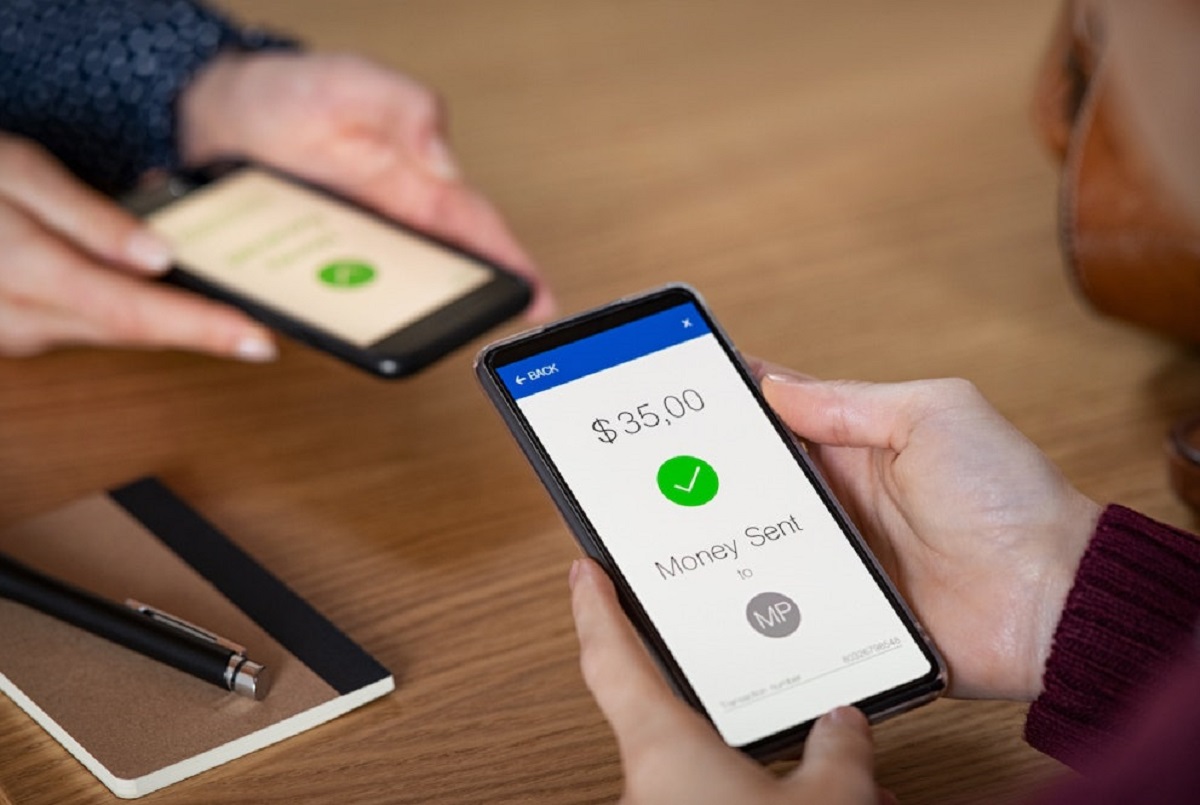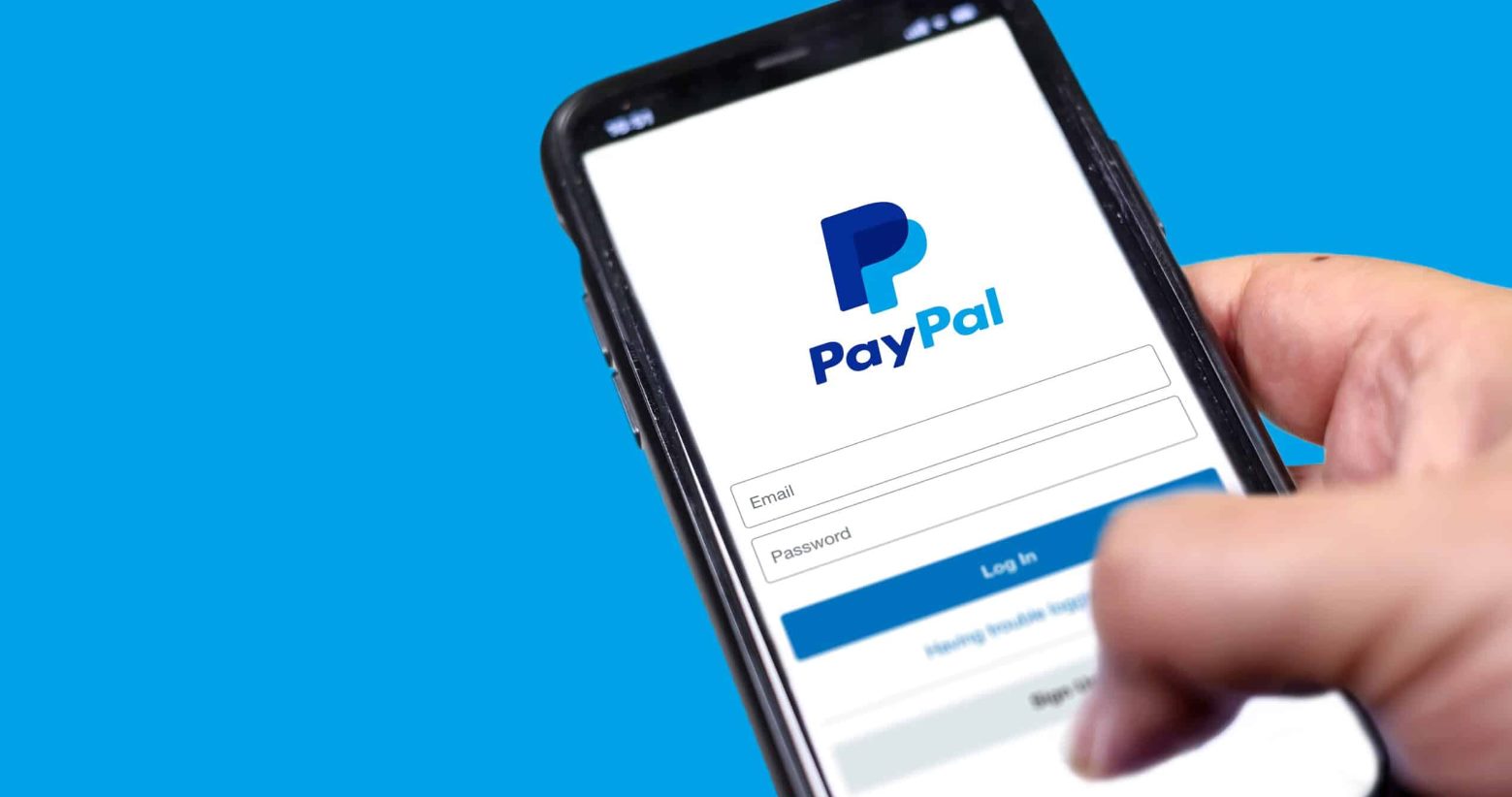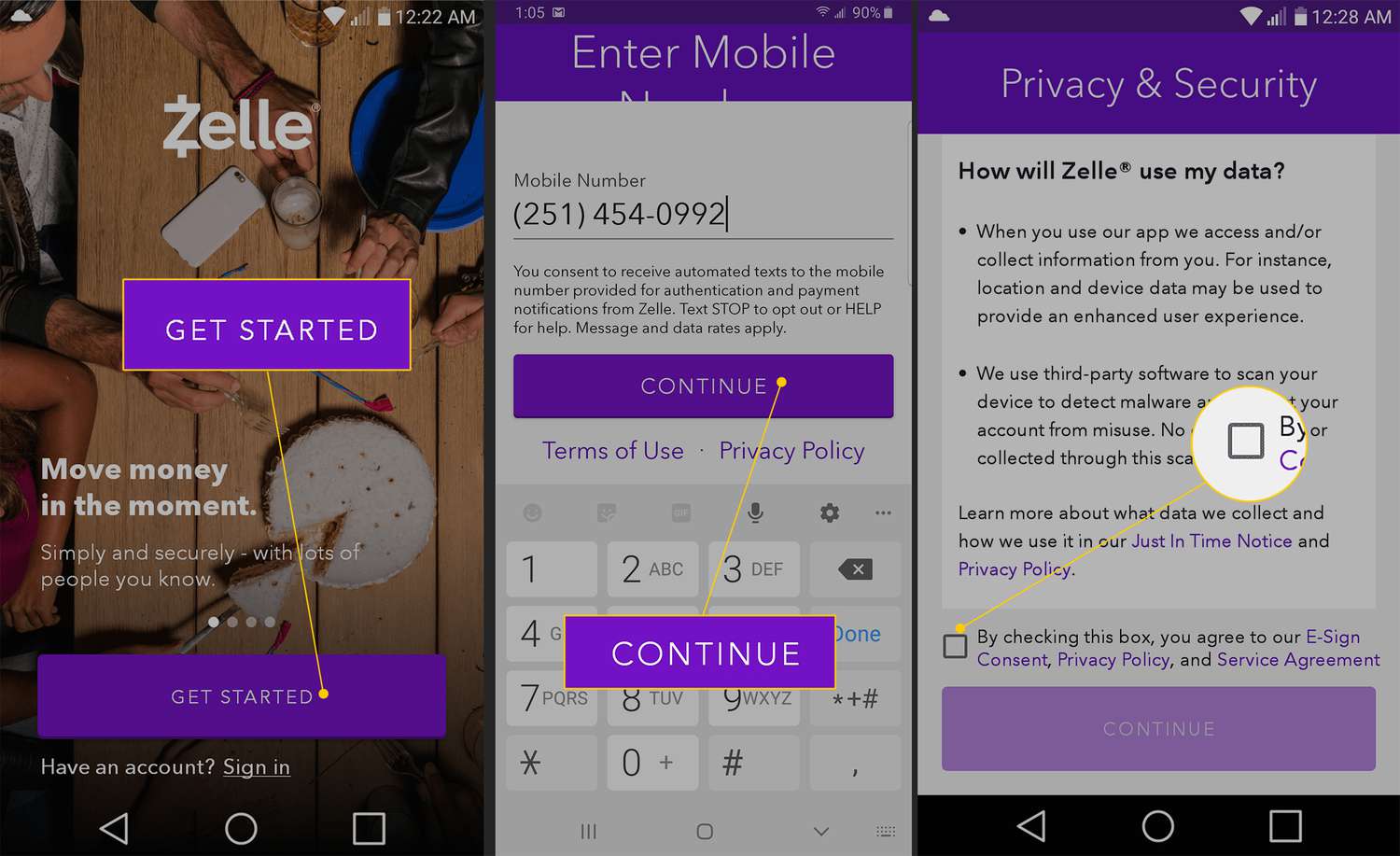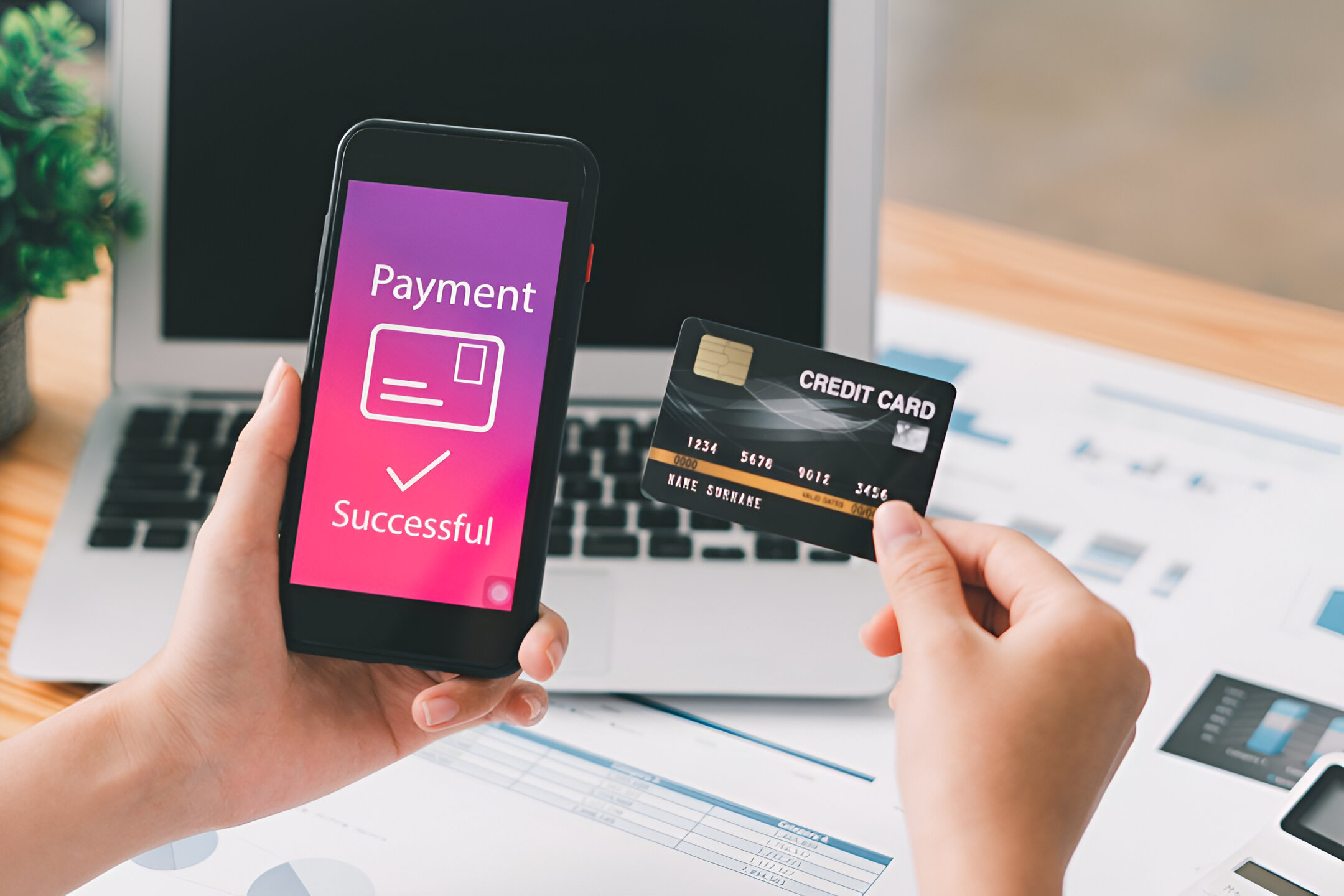Introduction
Online banking has revolutionized the way we manage our finances, offering convenience and flexibility like never before. One of the key features of online banking is the ability to transfer money between accounts with ease. Whether you need to send money to a friend, pay bills, or transfer funds between your own accounts, online banking provides a secure and efficient way to do so.
In this guide, we will walk you through the step-by-step process of transferring money via online banking. We will cover everything from setting up your online banking account to ensuring the security of your transactions. By following these steps, you can take full advantage of the benefits of online banking and make seamless money transfers from the comfort of your home or anywhere with internet access.
Before we dive into the details, it’s important to note that the specific steps may vary slightly depending on the online banking platform or institution you use. However, the general principles and procedures discussed here will apply to most online banking services. Now, let’s get started on your journey to becoming a savvy online banking user!
Step 1: Set Up Online Banking
The first step in transferring money via online banking is to set up your online banking account. If you haven’t done so already, you will need to contact your bank or financial institution to enroll in their online banking services. Most banks provide this option, allowing you to manage your accounts and perform financial transactions online.
Start by visiting your bank’s website and look for the “Sign Up” or “Enroll” button. Click on it and you will be directed to a page where you will need to provide some personal information, such as your name, contact details, and account number. Make sure to follow the instructions carefully and provide accurate information to ensure the smooth setup process.
During the registration process, you will also be asked to create a unique username and password for your online banking account. It is crucial to choose a strong password that includes a combination of letters, numbers, and symbols to enhance the security of your account.
Once you have successfully filled out the registration form, your bank will verify your information and activate your online banking account. This process may take a few business days, so be patient. You may receive an email or a notification from your bank confirming that your online banking account is ready to use.
After you receive the confirmation, you can proceed to the next step and log into your newly created online banking account. The login page can usually be found on your bank’s website. Enter your username and password and click on the “Login” or “Sign In” button to access your account.
It is important to note that some banks may require additional security measures, such as two-factor authentication, to further protect your online banking account. This could involve receiving a verification code via SMS or email, or using a biometric authentication method such as fingerprint or facial recognition. Follow the instructions provided by your bank to set up and enable these additional security features.
Once you have set up your online banking account and logged in successfully, you are ready to start transferring money between accounts. In the next step, we will guide you through the process of linking your accounts for seamless fund transfers.
Step 2: Link Your Accounts
Before you can transfer money between accounts using online banking, you need to link the accounts you want to transfer funds between. This step is essential for seamless and efficient fund transfers.
To link your accounts, log in to your online banking account and navigate to the account settings or preferences section. Look for an option that allows you to add or link accounts. Depending on your bank’s interface, this option may be labeled as “Manage Accounts,” “Link Accounts,” or something similar.
Click on the designated option, and you will be presented with a screen where you can input the necessary information to link your accounts. You will likely need to provide the account number and type of the account you wish to link. This could be a savings account, checking account, or even an external account (such as a credit card or another bank’s account) that you want to link for convenient transfers.
Follow the on-screen prompts and enter the required information accurately. Double-check the account details to ensure that you are linking the correct accounts. It’s worth noting that some banks may require additional verification steps for linking external accounts, such as providing proof of ownership or verifying small transaction amounts.
Once you have completed the necessary steps to link your accounts, you will typically receive a confirmation message or notification indicating that the accounts have been successfully linked. You may also be able to view the linked accounts in the account summary or dashboard section of your online banking interface.
It’s important to mention that you can link multiple accounts to your online banking profile, making it easier to transfer funds between different accounts without having to log in separately for each one. This feature is especially useful if you have multiple accounts with the same bank or if you hold accounts with different financial institutions.
Now that you have successfully linked your accounts, you’re ready to proceed to the next step, where we will explore the different methods available for transferring money via online banking.
Step 3: Choose the Transfer Method
After setting up your online banking account and linking your accounts, it’s time to choose the transfer method that best suits your needs. Online banking platforms typically offer various transfer options, allowing you to select the most convenient and efficient method for your specific transfer.
One common transfer method is the “Internal Transfer” or “Account Transfer,” which allows you to move funds between your own accounts held with the same bank. This method is ideal if you have multiple accounts, such as a checking account and a savings account, and want to transfer money between them seamlessly. Simply select the accounts you wish to transfer from and to, enter the transfer amount, and confirm the transaction.
If you need to transfer money to another person, you can utilize the “External Transfer” or “ACH Transfer” option. This method enables you to send funds electronically to accounts held at different banks. To utilize this option, you will need to provide the recipient’s account details, such as their account number and the bank’s routing number. Some banks may charge a nominal fee for external transfers, so be sure to review the fee schedule.
In addition to the above options, many online banking platforms also offer the ability to send money using mobile phone numbers or email addresses. This feature, often known as “Person-to-Person” or “P2P” transfer, allows you to send money to friends, family, or acquaintances by simply entering their contact information. The recipient will then receive a notification and instructions to claim the funds.
Furthermore, some banks may provide additional transfer methods such as wire transfers or expedited transfers for urgent transactions. These options typically involve faster processing times but may have higher associated fees.
To choose the transfer method that suits your needs, navigate to the “Transfer” or “Send Money” section within your online banking account. Explore the different options available to you and select the most appropriate one for your specific transfer. It’s important to review any limitations, fees, and processing times associated with each method to ensure a smooth and cost-effective transfer.
Now that you have chosen the transfer method, let’s move on to the next step, where we will guide you through entering the transfer details accurately.
Step 4: Enter the Transfer Details
Once you have chosen the transfer method that best suits your needs, it’s time to enter the transfer details accurately. This ensures that your money is transferred to the intended recipient or account securely and without any errors.
Start by accessing the transfer feature within your online banking account. Depending on your bank’s interface, this option may be labeled as “Transfer,” “Send Money,” or something similar. Click on it to proceed.
If you are transferring funds between your own accounts with the same bank, select the accounts you wish to transfer from and to. Ensure that you are transferring from the correct account and allocating the funds to the desired destination account.
In the case of an external transfer, enter the recipient’s account details accurately. This includes their account number and the bank’s routing number. Double-check the information to ensure that there are no typos or errors that could cause delays or misdirected transfers.
Next, enter the transfer amount. Take note of any minimum or maximum transfer limits set by your bank and ensure that your transfer falls within these limits. Confirm that you are transferring the correct amount to avoid any mistakes. Some banks may also provide an option to select the transfer date, allowing you to schedule the transfer for a future date if needed.
Take a moment to review the transfer details before proceeding. Ensure that all information, including the account numbers, amount, and transfer date, is correct. Avoid rushing through this step to minimize the chances of errors.
It’s worth mentioning that some online banking platforms also provide an option to include a memo or note with the transfer. This can be useful if you want to provide additional information or details to the recipient. However, keep in mind that this is usually optional and may not be available for all transfer methods.
Once you are satisfied with the transfer details and have confirmed their accuracy, proceed to the next step, where we will guide you through the verification and confirmation process to ensure a seamless transfer.
Step 5: Verify and Confirm the Transfer
After entering the transfer details, it’s crucial to take a moment to verify and confirm all the information before finalizing the transfer. This step ensures the accuracy of the transaction and minimizes the risk of errors or misdirected funds.
Before proceeding with the transfer, carefully review all the details displayed on the confirmation screen. Take note of the transfer amount, the accounts involved, and any additional information or notes you provided. Pay close attention to the recipient’s account number and routing number if it is an external transfer.
During the verification process, it is a good practice to cross-check the transfer details with the information you initially entered. Ensure that there are no typographical errors or discrepancies that could potentially cause delays or transfer to the wrong account.
If your online banking platform offers a preview or summary of the transfer, take advantage of this feature. It allows you to review the transaction before finalizing it. Take the time to carefully read through each detail and ensure their accuracy.
Many online banking platforms provide a confirmation prompt or checkbox before proceeding with the transfer. By checking this box or confirming the transaction, you indicate your agreement to proceed with the transfer. Keep in mind that once the transfer is confirmed, it may not be possible to reverse or cancel it.
It’s important to note that some banks may implement additional security measures during this step, such as entering a one-time verification code sent to your registered email or phone number. This added layer of security ensures that only authorized individuals can initiate the transfer.
By verifying and confirming the transfer, you demonstrate diligence and attention to detail. This step plays a vital role in safeguarding the accuracy and integrity of your financial transactions.
Once you have carefully reviewed and confirmed the transfer, proceed to the next step, where we will discuss how to review and track your transactions using online banking.
Step 6: Review and Track Your Transactions
After completing a money transfer via online banking, it’s essential to review and track your transactions to ensure accuracy and keep an eye on your financial activity. Online banking platforms provide tools and features that allow you to conveniently monitor and manage your transactions.
Start by accessing your account summary or transaction history within your online banking account. This section typically provides an overview of your recent transactions, including transfers, payments, and withdrawals.
Review the transaction you just completed to ensure it is accurately reflected in your transaction history. Confirm that the transfer amount, date, and accounts involved match the details of your intended transfer.
If you notice any discrepancies or unexpected transactions, it’s important to contact your bank immediately. They can investigate the issue and help resolve any errors or fraudulent activities that may have occurred. Promptly addressing any concerns ensures the security and integrity of your finances.
Online banking platforms also offer features to help you track and categorize your transactions. You can easily filter and search for specific transactions based on criteria like date range, transaction type, or account. This feature is particularly useful for organizing your financial records and monitoring your spending habits.
In addition to reviewing your transaction history within your online banking account, consider regularly checking your account statements. Banks typically provide monthly or quarterly statements that summarize your account activity in a comprehensive format. Take the time to carefully review these statements and reconcile them with your own records to ensure accuracy.
Many online banking platforms also provide options to download your transaction history in various formats, such as PDF or CSV. This allows you to save and store your financial records offline or import them into personal finance management software for further analysis.
By regularly reviewing and tracking your transactions, you can confidently stay on top of your financial activity, identify any discrepancies or fraudulent charges, and take proactive steps to manage your finances effectively.
Now that you have learned how to review and track your transactions, let’s proceed to the final step, where we will discuss some additional security measures to consider when using online banking.
Step 7: Consider Security Measures
When using online banking services, it is crucial to prioritize the security of your financial transactions. By taking proactive measures, you can safeguard your personal information and protect yourself from potential threats. Here are some essential security measures to consider:
1. Strong Passwords: Ensure that you have unique and strong passwords for your online banking account. Use a combination of uppercase and lowercase letters, numbers, and special characters. Avoid using easily guessable passwords or common phrases that can be easily cracked.
2. Two-Factor Authentication (2FA): Enable two-factor authentication if your bank provides this feature. This adds an extra layer of security to your online banking account by requiring a verification code or biometric data in addition to your username and password.
3. Avoid Public Wi-Fi: Refrain from conducting online banking transactions while connected to public Wi-Fi networks. Public Wi-Fi connections are often unsecured and could expose your sensitive information to potential hackers.
4. Update Your Devices: Keep your devices, such as smartphones, tablets, and computers, up to date with the latest security patches and software updates. This helps protect against known vulnerabilities that cybercriminals may exploit.
5. Be Wary of Phishing Attempts: Stay vigilant against phishing scams, where attackers attempt to deceive you into revealing your personal information through fraudulent emails, messages, or websites. Never provide confidential information in response to unsolicited requests, and verify the legitimacy of any communications you receive from your bank.
6. Monitor Your Accounts: Regularly review your account activity and statements to detect any unusual or unauthorized transactions. Report any suspicious activity to your bank immediately.
7. Use Secure Networks: When accessing your online banking account, use a secure and private network connection. Preferably, use your personal home network or a trusted connection to ensure the confidentiality of your data.
8. Log Out and Secure Your Devices: Always log out of your online banking session after completing your transactions. Additionally, secure your devices with passcodes or biometric authentication to prevent unauthorized access.
9. Regularly Review Privacy Settings: Familiarize yourself with the privacy settings provided by your online banking platform. Understand what information is being collected, how it is used, and adjust the settings according to your preferences.
10. Stay Informed: Stay updated on the latest online banking security practices and be aware of common scams and fraud attempts. Educate yourself about the potential risks and regularly review resources provided by your bank or financial institution.
By implementing these security measures and staying vigilant, you can significantly reduce the risks associated with online banking and protect your financial information and transactions from unauthorized access.
Conclusion
Congratulations! You have successfully learned how to transfer money via online banking. By following the step-by-step process outlined in this guide, you can now confidently transfer funds between accounts with ease and convenience.
Setting up your online banking account, linking your accounts, and choosing the right transfer method are the foundational steps that ensure a seamless transfer process. By entering the transfer details accurately and verifying them before confirming the transaction, you minimize the risk of errors and ensure the funds reach the intended recipient.
Reviewing and tracking your transactions is essential for monitoring your financial activity and identifying any discrepancies or fraudulent charges. Additionally, considering security measures such as using strong passwords, enabling two-factor authentication, and being cautious of phishing attempts help protect your personal information and financial transactions.
Remember to always prioritize the security of your online banking activities. By staying informed about the latest security practices and actively monitoring your accounts, you can take control of your financial well-being and prevent unauthorized access.
As technology continues to advance, online banking provides us with a convenient and efficient way to manage our finances. However, it’s important to remain vigilant and stay educated about potential risks and best practices. By incorporating these steps into your online banking routine, you can make the most out of this powerful tool while keeping your financial information secure.
Now, go forth and enjoy the benefits of online banking as you effortlessly transfer money between accounts, pay bills, and manage your finances from the comfort of your home or wherever you may be.

























